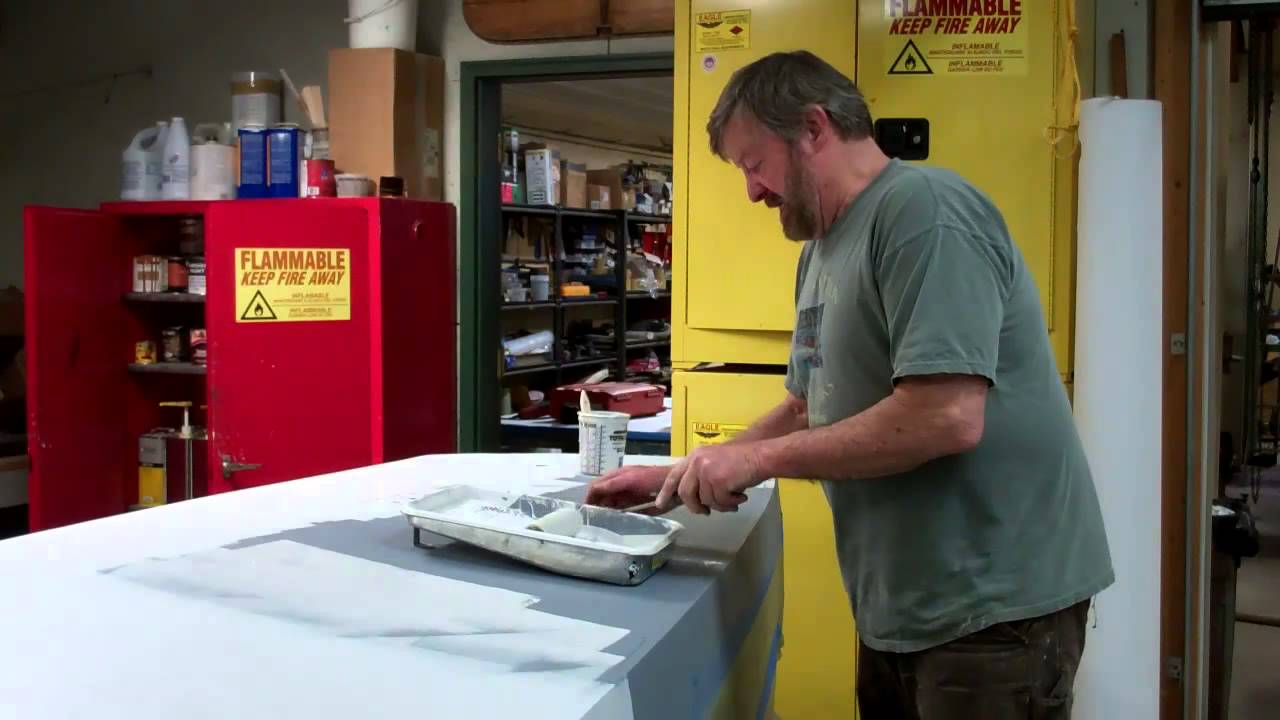Our “True 5200 Bottom” project on the 1930 Dodge Runabout, the Minnow, has reached the barrier coat stage. In this clip we illustrate the foam-roller application of the second of will be five coats of Interlux 2000E Barrier Coat Primer. Five coats? Really? Yes.
In Danenberg’s words, “One of the biggest problems I’ve seen with shortcut 5200 bottoms is either a total lack of, or inadequate amounts of, Interlux 2000E Barrier Coat Primer. This two-part (thus epoxy) paint is a water barrier coat meant to keep the water from soaking into the bottom planks. It does this with minute platelets in its makeup that vastly slow the movement of water. Unlike hard epoxy laminating glues, it is flexible enough to move with the bottom.
“It is a very important part of the true 5200 bottom. It helps stabilize the bottom construction, keeping adequate moisture in the wood during extremely dry winter storage, and keeping excess moisture out of the wood during summer use. Its use is meant to stop excessive expansion/contraction that cracks open paint coatings, elongates screw holes, and buckles or cracks planks and frames.
“This product’s instructions call for a 10-mill thickness, usually 4-6 rolled-on coats (no sanding between coats), or two gallons for the average 20-footer. If your restorer tells you that 2 coats are enough, he is wrong.” (Classic Boating, September-October 2014, p. 25.)
Yes, Interlux 2000E is pricey, $92/gallon plus hazmat and shipping from Jamestown Distributors, but price and cost so often inversely correlated, and this is an example of that principal. Spend an extra $200 or so in paint now to save thousands repairing failed fasteners and planking way too soon in the future.

